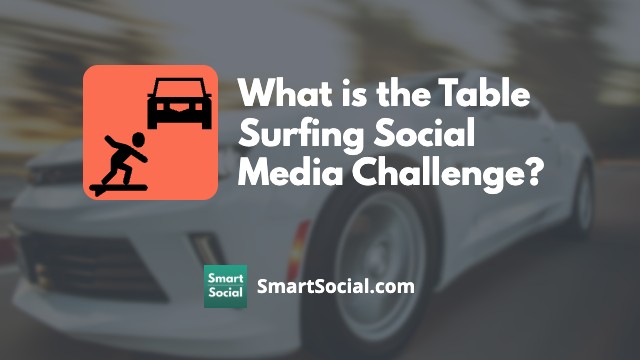How to Set a Positive Example When Using Your Mobile Device
Green Zone App
(Click here to learn more)
Dangerous Social media challenge
(Click here to learn more)
Red Zone App
(Click here to learn more)
Gray Zone App
(Click here to learn more)

There was a time when parents could purchase a toy for their child, hand it off nonchalantly, send them to another room, outside, or even down the street to the neighbors to play with the toy – all without a care in the world.
So when it comes to a digital or mobile device, can we treat them as equally carefree? As parents, you want to ensure that your student is safe and can use an iPad, Kindle, or mobile device responsibly. The best way to teach students digital responsibility is to encourage them to treat devices like tools and to consistently set positive examples.
Start early with the concept of “tools, not just toys”
For a digital or mobile device, it’s best to treat them like a car.
It may seem impossible to treat a mobile device or tablet as a mere tool; especially when so many adults use their devices as a gaming unit or an entertainment console. However, for a digital or mobile device, it's best to treat them like a car. For example, before we even learn to drive we are learning the rules of the car and how to use the car as a tool. As a child, you begin to learn the rules of the road, without even knowing it. You simply felt the security of a seatbelt, heard the clicking of the turn signal prior to turning left or right, and observed a red light through the view of the windshield.
Set examples when using your digital device
Clearly communicate the rules once you hand your child anything digital.
How do we teach students to treat digital devices as tools and not just toys? It’s simple. As a parent you need to realize, your child is watching you.
Every student we asked from ages 3 and up knew exactly what you should do at a RED light. They knew it was for safety reasons, and they knew that people could get hurt if they didn’t. So set examples when using your digital device as well. Here’s 5 examples to help you get started:
- Don’t allow the device to dictate your relationships. Teach your child to be aware of the people around them exampling face-to-face relationships so they carry that through to digital relationships.
- Example civility with your devices. Manners matter! Even online or when you think nobody's watching.
- Engage in a balance of activities, both digital and non-digital.
- Clearly communicate the rules once you hand your child anything digital. Remember, it’s not a toy, it’s a tool.
- Last, but certainly not least, do your best to find ways to use digital devices to enhance your child’s learning and teach responsibility.
About our guest blogger

Katherine Wallace is a computer technology teacher and IT coordinator who primarily focuses on her students and helping them to be educated in the use of responsible technology. Katherine also works with staff members to encourage them to be bold and continue learning new things as they move forward into an ever-changing future, trying to keep up with their students and the future leaders of our world. Connect with her on LinkedIn.
Protect your family and enter for a chance to win cool prizes
Become a member or log in to learn more on this topic
Protect your family and enter for a chance to win cool prizes

., start learning from this page to earn points!*
Hello, I'm Josh, the founder of SmartSocial.com.
Don't leave this page until you fill out our feedback form that will appear after you learn from the resources...
Here are some of the latest resources at SmartSocial.com
Become a Very Informed Parent (VIP) to get our social media suggestions in your email every Tuesday & Thursday.



Hello, I'm Josh, the founder of SmartSocial.com. Protect your family by taking my 1 minute quiz
This quiz will help you understand how safe your family is


Schools & Districts: Partner with us to protect your community online
Our remote presentations (and website) teach over a million parents and students each year how to be safe so they can shine online. We teach students how their accounts can be used to create a portfolio of positive accomplishments that impress colleges and employers.


Join Our Smart Social Podcast
each week on iTunes
With over 500 episodes, Josh Ochs interviews psychologists, therapists, counselors, teachers, and parents while showing you how to navigate social media to someday shine online.
Listen on:



.jpg)
.jpg)

.jpg)


